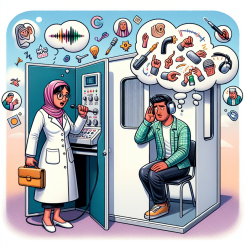Unlock the Secrets of Trauma System Success: What Every Practitioner Needs to Know!
As practitioners in the field of trauma care, we are constantly seeking ways to enhance our skills and improve patient outcomes. The history and development of the Harborview Medical Center and the Washington State Trauma System provide invaluable insights that can guide us in achieving these goals. By examining the principles and lessons learned from this comprehensive system, we can better understand how to implement effective trauma care strategies in our own practices.
The Evolution of a Trauma System
The Harborview Medical Center in Seattle stands as a beacon of excellence in trauma care, serving as the sole Level I adult and pediatric trauma center for Washington State. Its journey began as a humble six-bed facility in 1877 and has since evolved into one of the busiest trauma centers in the nation. This transformation was driven by a commitment to serving the community's most vulnerable populations and a mission to provide high-quality, inclusive trauma care.
The Washington State Trauma System, developed in tandem with Harborview's growth, is an inclusive model designed to ensure access to trauma care across both urban and rural areas. This system was meticulously crafted based on data-driven decisions to allocate resources according to population needs, thereby setting a standard for trauma care nationwide.
Guiding Principles for Trauma System Development
From the Harborview experience, several guiding principles have emerged that can inform the development of trauma systems elsewhere:
- Data-Driven Planning: Comprehensive data collection is crucial for assessing the burden of injury, existing resources, and patient outcomes. This information guides the strategic allocation of trauma centers and resources.
- Inclusive Designation: An inclusive approach allows rural centers to provide initial care and facilitates structured triage and transfer processes, improving access and outcomes.
- Multidisciplinary Governance: A state-level lead agency should oversee the system, with governance involving all stakeholders across the continuum of care.
- Regional Flexibility: Establishing regional structures allows for tailored planning, education, and quality improvement activities.
- Concentration of Expertise: Level I and II centers should focus on severe injuries, concentrating expertise and resources to optimize patient outcomes and educational opportunities.
Lessons for Practitioners
For practitioners looking to improve their skills, the Harborview and Washington State Trauma System model offers several lessons:
- Continuous Education: Engage in ongoing education and training to stay abreast of best practices and emerging research in trauma care.
- Collaboration and Networking: Foster collaboration with other healthcare providers and institutions to share knowledge and improve care delivery.
- Quality Improvement: Participate in quality improvement initiatives to refine trauma care practices and enhance patient outcomes.
- Research and Innovation: Encourage and engage in research efforts to contribute to the advancement of trauma care and system development.
By implementing these strategies and learning from the Harborview model, practitioners can significantly enhance their trauma care capabilities and contribute to the development of robust, effective trauma systems.
To read the original research paper, please follow this link: The history of Harborview Medical Center and the Washington State Trauma System.










